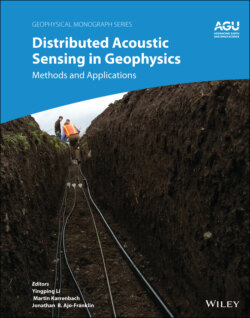Читать книгу Distributed Acoustic Sensing in Geophysics - Группа авторов - Страница 40
2.2.4. Handling Fiber‐Optic Cables
ОглавлениеFiber‐optic cables typically contain multiple strands of fiber‐optic glass and can be included during the manufacturing of other cable types, such as wireline cables that have multiple electrical wires. Unlike conventional electrical cables, fiber‐optic cables require a different handling strategy. Bends in fiber‐optic cables must be minimized because a tight radius of curvature will allow the laser light trapped in the fiber to leak out of the glass core, thereby reducing the sensitivity of the strain measurements. Another important aspect is that fiber‐optic connections must be made under clean conditions. Making fiber‐optic connections under unclean conditions—where junction boxes are exposed to the wind, sand, dirt, and even oils from the skin—will generate significant optical losses; therefore, it is important to plan for clean areas and facilities where the optical connections can be made.
Figure 2.2 (Left) Conceptual diagram of an IU (inside the dotted black line); (right) relationship between the measurements of I and Q and the resulting extracted phase value Θ. The dotted red line represents the modulus (or length) of the I/Q vector.
